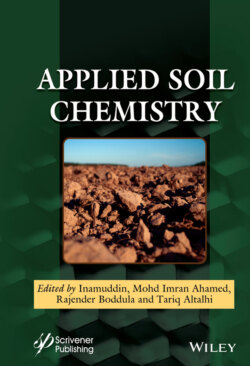Читать книгу Applied Soil Chemistry - Группа авторов - Страница 36
1.5 Conclusions
ОглавлениеThe greatest potential to improve carbon sequestration rates in soils is by converting croplands into (or back into) woodlands, grasslands, and wetlands. Whereas intensive addition of farmyard manure, slurries, and general biomass waste into cropland soils can significantly increase their carbon densities, most intensive soil carbon intervention projects on croplands are less effective in the long term than converting such lands to natural forests, grasslands, and wetlands. Grassland and converted cropland carbon storage potential could be improved by more extensive growth of perennial deep-rooted, fast growing bioenergy crops such as switchgrass and miscanthus. Whereas, the top 2 m of soils currently hold about 2,400 Pg of carbon globally, there is a general consensus that improved land management practices could add to this by between 0.5 to 2.0 Pg C a−1. A key limitation on the soils ability to rapidly uptake additional carbon from the atmosphere in coming decades is the long residence time of carbon in existing soils. This suggests that it would take significant time for the additional carbon added to soil from biomass to be converted and stabilized by carbon mineralization. Once carbon is mineralized it is more likely to be retained and sequestered long term in the ground rather than be cycled back into the atmosphere. Even in mineralized form, some soil carbon is frequently disturbed and displaced by the relentless forces of erosion, particularly over geological time scales. These factors mean that attempts to sequester more carbon in soils, while beneficial in the long term, can only constitute a relatively small component of a short-term global effort to sequester more carbon from the atmosphere to rapidly combat rising CO2 levels in the atmosphere that are fueling climate change. However, efforts to prevent soil erosion and reduce soil disruption by agriculture are essential to preserve the carbon store currently held globally in soils to prevent as much as possible of that carbon being displaced to the atmosphere and contributing incrementally to CO2 levels in the atmosphere.
